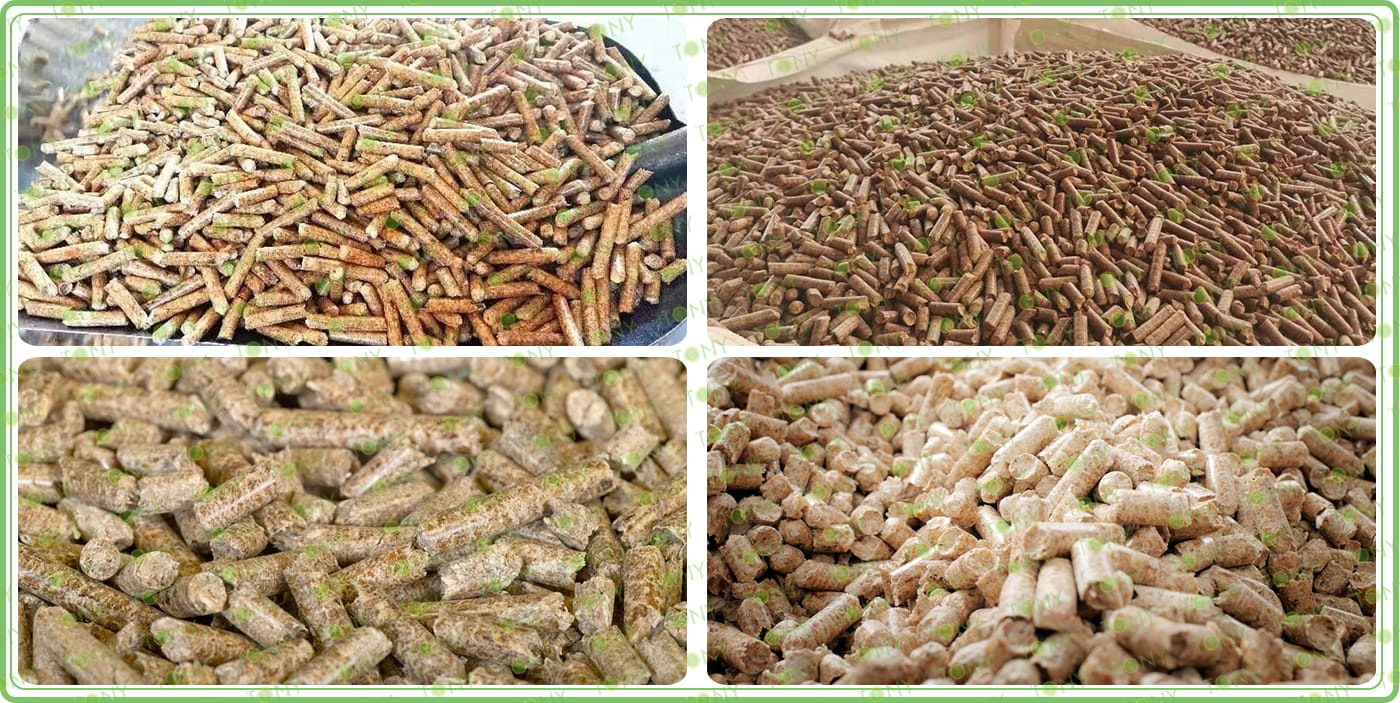When wood pellet machine are pressing wood chips, sometimes the particles do not form properly, the pressed particles are loose, the particle formation rate is low, or even the particles cannot be formed at all. If it is a new machine, one should consider whether it has not undergone wet material or oil material grinding before purchase. This is a problem that many people tend to overlook. If this step is ignored, it may cause the machine to stall and get stuck at the hole when it starts up, and of course, it will not be able to discharge. Therefore, for the wood pellet machine purchased, it is necessary to take some wood chips that are about to be pressed into the machine, mix in about 10% of industrial oil (such as ordinary engine oil), and then mix the material thoroughly. After that, put the material into the wood chip molding machine and start pressing the particles. Then, put the pressed particles back into the machine and repeat this process 5-6 times. Finally, put normal wood chips back and can normally form the particles.
If it is not a new machine, the production problems should be analyzed from the following aspects: 1. Wood chip raw materials. 2. Compression ratio of the mold. 3. Gap between the press roller and the ring mold, etc. I will explain in detail the common reasons for poor particle formation through several typical cases, hoping to be helpful to all customers.
I. Raw materials:
A. Generally speaking, wood chips with softer textures such as pine are easier to form particles. If the raw material is too hard or in a fine powder form (the best specification of wood chips is 1-2mm), then adding sawdust can basically form particles.
Different raw materials have different properties and fiber structures, and the difficulty of forming particles also varies. Materials that are difficult to press, such as palm, and another one is, if it is a mixed material, the mixing ratio of various components will also affect the formation rate.
B. Moisture control: The moisture content of wood chip raw materials should be controlled at around 13% (currently, the moisture content requirement for finished particles on the market is generally 8%), because of the characteristics of the raw materials and hardness, the specific value should be determined according to one's own actual production situation (it is recommended that the moisture range be between 10-20%). For wood chip pelletizing, our pelletizing machine requires the moisture to be between 13% and 17%.
C. Raw material principle issues: Wood chips, straw, paper chips, etc., have different properties and fiber structures, and the difficulty of forming particles also varies. Materials that are difficult to press, such as palm. Another one is, if it is a mixed material, the mixing ratio of various components will also affect the formation rate.

II. The compression ratio of the mold does not match the properties of the raw materials: Some enterprises believe that the compression ratio is the ratio of the length of the mold cavity to the diameter of the mold cavity. Some enterprises call this the length-to-diameter ratio. Some enterprises believe that the compression ratio is the square of the diameter of the bell-shaped cavity to the square of the diameter of the mold cavity. No matter which way the compression ratio is calculated, due to the material's friction and squeezing with the mold and the roller during production, the hole diameter will increase, while the mold cavity length will decrease, and the particle quality will deteriorate. Therefore, the compression ratio provided by the manufacturer to the customer is only customized according to commonly used materials. So customers want to find the appropriate compression ratio for their own raw materials in production practice. Only in this way can they better control the quality of the particles and improve the working efficiency of the equipment.
III. Adjustment of the gap between the press roller and the mold: The gap between the press roller and the mold is generally controlled at 0.1-0.3mm for the best effect. If the gap is too large, the pressure is insufficient, and the particles cannot be formed. If the gap is too small, the density and smoothness of the accumulated particles may be better, but it will increase the friction of the mold roller and reduce the service life of the mold and affect the output of the pelletizer. Adjustment of the gap of the vertical ring die granulator: The vertical ring die granulator is one of our company's flagship products. It is currently the most durable equipment for biomass fuel granulation in China. The adjustment of the pressure wheel and the grinding tool is accomplished by adjusting the screws on the pressure wheel fixing device.
When a new mold is installed, first, loosen the adjusting bolt of the pressure roller to adjust the pressure roller to the state where the outer circle surface of the pressure roller is tightly against the inner circle surface of the ring die; second, adjust the eccentric shaft of the pressure roller successively to make the gap between each pressure roller and the ring die appropriate, and gradually adjust the gap. Third, tighten the adjusting bolt.
During use, the mold is protected while sacrificing the pressure roller rubber, because the price of the mold is dozens or even hundreds of times higher than that of the pressure roller rubber. Therefore, when choosing an appropriate gap, the hardness of the pressure roller rubber should not be too high, that is to say, the wear resistance of the pressure roller rubber should not be higher than that of the ring die. (Of course, this is provided by the manufacturer, and it needs to be judged based on the manufacturer's integrity.)
Then, how to determine that the gap between the ring die and the pressure roller is between 0.1 and 0.3 (this is just a data, for convenient description)? According to my many years of industry experience, it requires two people to cooperate in operation. When clicking the motor, during the process where the mold and the pressure roller have no material contact, it is best to hear the state where the mold and the pressure roller are in a state of contact but not contact. (Non-professionals should not practice this to avoid equipment failure!)
V. After adjustment, attention should be paid to the regular maintenance of the equipment. During the production process of the equipment, it is necessary to clean the used materials as necessary to avoid the materials containing large pieces of sand, gravel, iron pieces, bolts, and iron shavings and other hard particles. Because these impurities accelerate the wear of the ring die, and a large number of hard impurities will cause the ring die to be stressed repeatedly, resulting in fatigue of the ring die. When the force applied in a certain time exceeds the strength limit of the ring die, the ring die will experience a burst phenomenon.





















